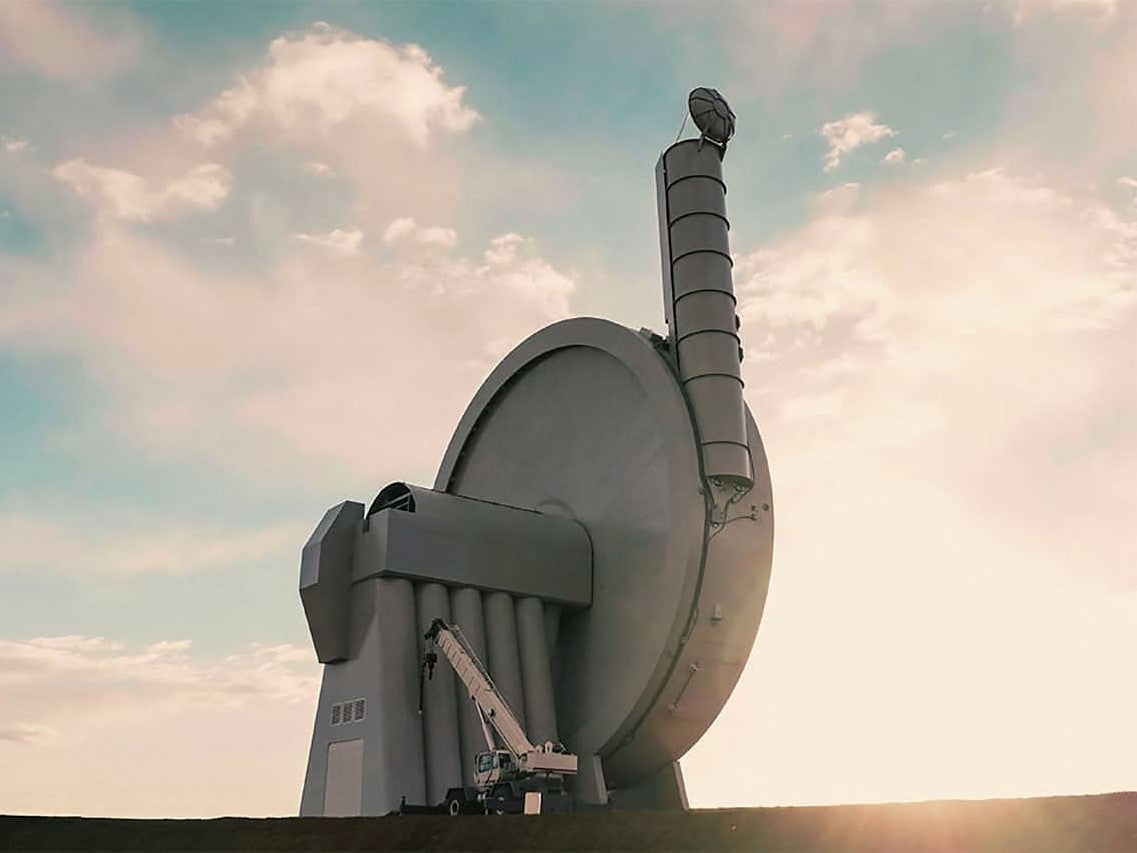Nasa to test catapult that flings objects into space at 5,000mph
SpinLaunch accelerator system will ‘eliminate the cost, time, and complexity’ of reaching space

Your support helps us to tell the story
From reproductive rights to climate change to Big Tech, The Independent is on the ground when the story is developing. Whether it's investigating the financials of Elon Musk's pro-Trump PAC or producing our latest documentary, 'The A Word', which shines a light on the American women fighting for reproductive rights, we know how important it is to parse out the facts from the messaging.
At such a critical moment in US history, we need reporters on the ground. Your donation allows us to keep sending journalists to speak to both sides of the story.
The Independent is trusted by Americans across the entire political spectrum. And unlike many other quality news outlets, we choose not to lock Americans out of our reporting and analysis with paywalls. We believe quality journalism should be available to everyone, paid for by those who can afford it.
Your support makes all the difference.Nasa could soon be catapulting payloads into space through an innovative launch system that hopes to dramatically improve space accessibility.
The US space agency partnered with California-based startup SpinLaunch to develop a ‘Suborbital Accelerator Launch System’, with the hope of performing the first orbital test flight in 2025.
The launcher works by rotating a carbon fibre arm at speeds of up to 8,000 kilometres per hour (5,000 mph) within a 91-metre diameter steel vacuum chamber.
The hypersonic speed propels a launch vehicle containing a satellite into the sky, allowing it to reach orbit much quicker than conventional rockets.
Once above the stratosphere, the payload deploys a small amount of propulsion to provide the final push to reach the required position for orbit.
SpinLaunch claims the system requires no fundamental advances in material science or emerging technologies, and can be built using existing industrial hardware and commonly available materials.
If successful, it would significantly reduce the cost of delivering payloads into orbit.
“SpinLaunch is offering a unique suborbital flight and high-speed testing service, and the recent launch agreement with Nasa marks a key inflection point as SpinLaunch shifts focus from technology development to commercial offerings,” said Jonathan Yaney, founder and CEO of SpinLaunch.
“What started as an innovative idea to make space more accessible has materialised into a technically mature and game-changing approach to launch.”
SpinLaunch performed the first ever test flight of its launch system in October 2021 from its testing site at Spaceport America in New Mexico. Objects have since been flung into the skies at speeds in excess of 1,600 kph, though none are yet to reach orbit.
“Through these turnkey space solutions, SpinLaunch is helping customers eliminate the cost, time, and complexity constraints currently driving space-related business models – ultimately delivering less expensive, scalable access to space,” SpinLaunch said in a statement.

Join our commenting forum
Join thought-provoking conversations, follow other Independent readers and see their replies
Comments